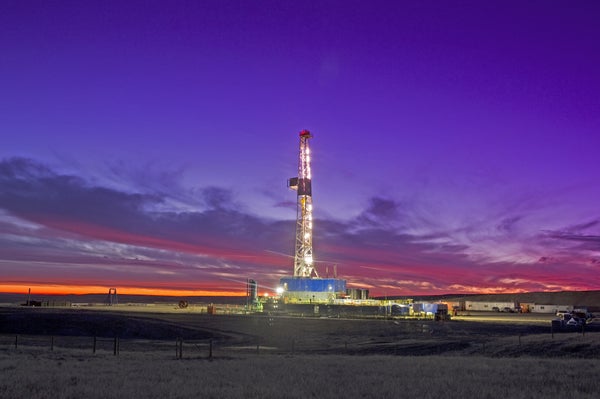This article was published in Scientific American’s former blog network and reflects the views of the author, not necessarily those of Scientific American
Oil price rises over the past 40 years have been truly spectacular. In constant money, the price of oil rose by almost 900% between 1970 and 2013. This can be compared with a 68% increase for a metals and minerals price index, comprising a commodity group that, like oil, is exhaustible. In our view, it is political rather than economic forces that have shaped the inadequate growth of upstream oil production capacity, the dominant factor behind the sustained upward price push.
But we believe the period of excessively high oil prices has come to an end. The international spread of two revolutions will assure much ampler oil supplies, and will deliver prices far below the highs that reigned between the end of 2010 and mid-2014.
Beginning less than a decade ago, the shale revolution – a result of technological breakthroughs in horizontal drilling and fracking – has turned the long run declining oil production trends in the US into rises of 88% from 2008 to 2015. Despite current low prices and the damage done to profits, an exceedingly high rate of productivity improvements in this relatively new industry promises to strengthen the competitiveness of shale output even further.
On supporting science journalism
If you're enjoying this article, consider supporting our award-winning journalism by subscribing. By purchasing a subscription you are helping to ensure the future of impactful stories about the discoveries and ideas shaping our world today.
A series of environmental problems related to shale exploitation have been identified, most of which are likely to be successfully handled as the infant, “wild west” industry matures and as environmental regulation is introduced and sharpened.
Geologically, the US does not stand out in terms of shale resources. A very incomplete global mapping suggests a US shale oil share of no more than 17% of a huge geological wealth, widely geographically spread. Given the mainly non-proprietary shale technology and the many advantages accruing to the producing nations, it is inevitable that the revolution will spread beyond the US.
We have assessed the prospects of non-US shale oil output in 2035, positing that the rest of the world will by then exploit its shale resources as successfully as the US has done in the revolution’s first ten years. This would yield rest of world output of 20 million barrels per day in 2035, which is similar to the global rise of all oil production in the preceding 20 years – a stunning increase with far-reaching implications in many fields.
Another related revolution is beginning to see the light of the day, but news about it has barely reached the media. It is being gradually realized that advancements in horizontal drilling and fracking, technologies normally associated with shale, can also be applied to fuller extraction from conventional, but old and tired, oil fields. If the rest of the world applies these techniques to conventional oil, as the US has done in recent years, this would yield a further addition of conventional oil amounting to 20 million barrels per day by 2035.
The oil output increases are bound to put downward pressure on prices, either by preventing rises from recent levels, averaging some US$53 per barrel (Brent) in 2015, or by pushing them back to these levels if an early upward reaction takes place. Our optimistic scenario, which appears increasingly likely, sees a price of US$40 by 2035 – only a fraction of the levels envisaged in authoritative forecasts by public bodies and leading oil corporations.
The global spread of the revolutions and the ensuing price weakness that we envisage for the coming two decades will, on balance, provide a great advantage to the world economy at large. Not surprisingly, public income from oil in producing nations will fall if they fail to compensate for falling prices by expanding output. Juxtaposed against this conclusion is our supposition that the destructive conflicts over the oil rent, which we see as a manifestation of the “resource curse”, will be ameliorated with normalization of profit levels.
The two revolutions will apparently cement and prolong the global oil dependence, with implications for climate policy. Efforts to develop renewables for the purpose of climate stabilization will become more costly – requiring greater subsidies, especially in the transport sector – in consequence of lower oil prices.
The abundance caused by the revolutions will lead to hard to fathom changes in international political relations. We surmise that much of the oil importers’ urge for political intervention and control will dissipate as access to oil becomes less urgent. For instance, the heavy diplomatic and military presence of the US in the Middle East is likely to be questioned when the country’s dependence on oil from the region is further reduced.
A world of growing and geographically diversified oil supply will not only suppress prices, but also promote competition among suppliers and make it more difficult for producers to use energy sales in pursuit of political ends.
